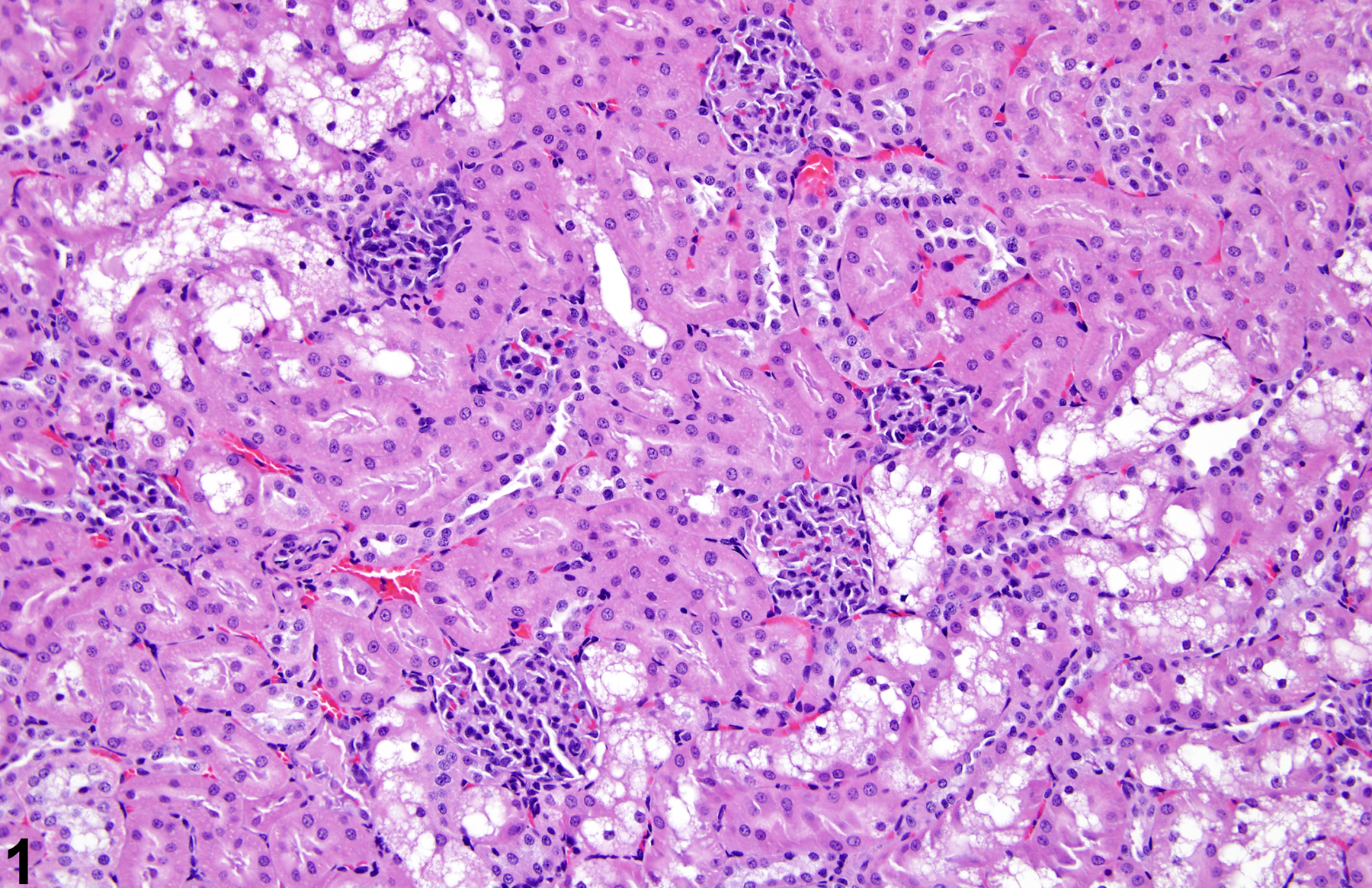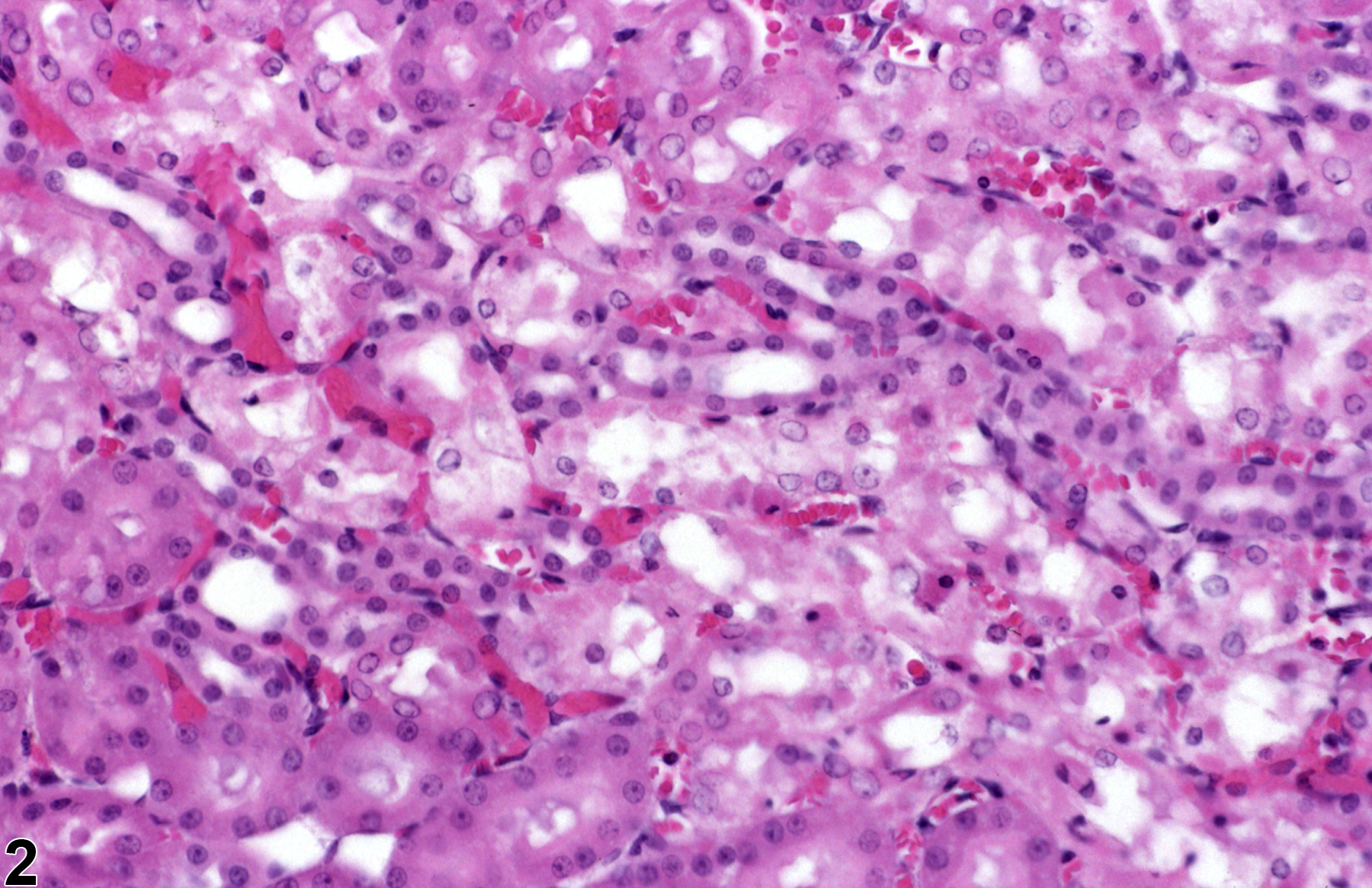Urinary System
Kidney, Renal Tubule - Degeneration
Narrative
Frazier KS, Seely JC, Hard GC, Betton G, Burnett R, Nakatsuji S, Nishikawa A, Durchfeld-Meyer B, Bube A. 2012. Proliferative and non-proliferative lesions in the rat and mouse urinary system. Toxicol Pathol 40:14S-86S.
Abstract: http://www.ncbi.nlm.nih.gov/pubmed/22637735
Kidney, Renal tubule - Degeneration in a male Tg.Ac (FVB/N) hemizygous mouse from a subchronic study. The degeneration of cortical tubule epithelial cells is characterized by vacuolation of the cytoplasm and pyknosis of the nuclei.



